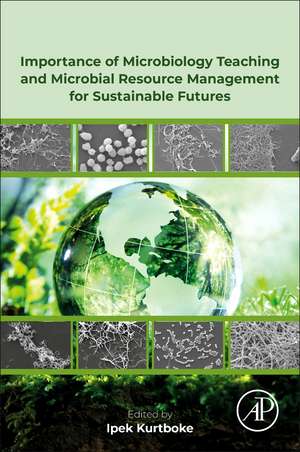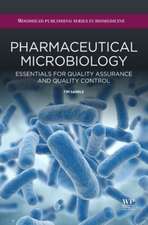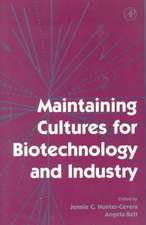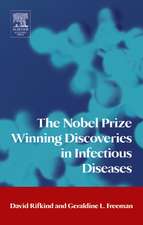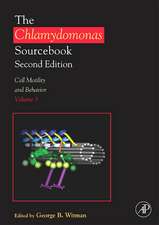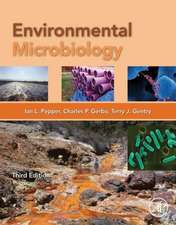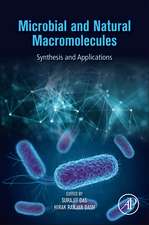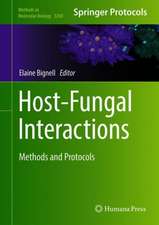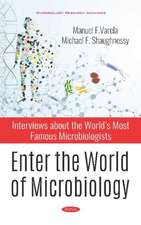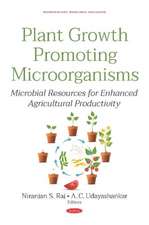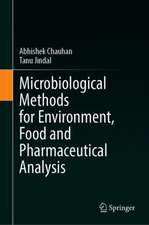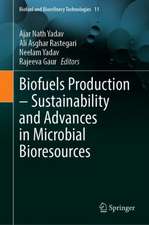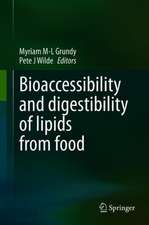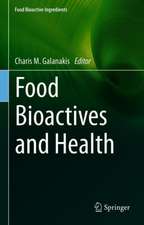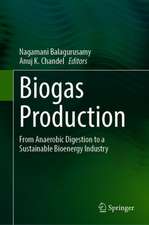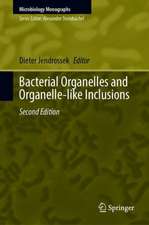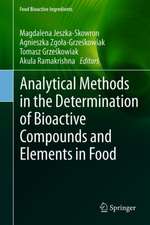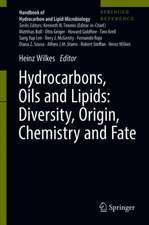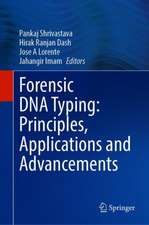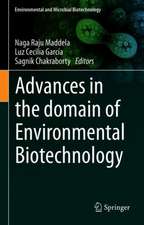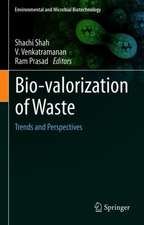Importance of Microbiology Teaching and Microbial Resource Management for Sustainable Futures
Editat de Ipek Kurtbokeen Limba Engleză Paperback – 14 apr 2022
Interestingly, there are fundamental aspects of microbiology that did not change since revelations of their identity dating back to the Pasteur era. This book details the progress made and milestones that have been set in the science.
- Emphasizes traditional and discipline-based teaching with a focus on microbiology
- Combines pedagogy and the challenges faced in the post-genomic era
- Provides examples from various parts of the world, including from the Pasteur Institute
Preț: 671.02 lei
Preț vechi: 878.06 lei
-24% Nou
Puncte Express: 1007
Preț estimativ în valută:
128.40€ • 139.91$ • 108.20£
128.40€ • 139.91$ • 108.20£
Carte tipărită la comandă
Livrare economică 17 aprilie-01 mai
Preluare comenzi: 021 569.72.76
Specificații
ISBN-13: 9780128182727
ISBN-10: 0128182725
Pagini: 376
Ilustrații: Approx. 100 illustrations (100 in full color)
Dimensiuni: 152 x 229 mm
Editura: ELSEVIER SCIENCE
ISBN-10: 0128182725
Pagini: 376
Ilustrații: Approx. 100 illustrations (100 in full color)
Dimensiuni: 152 x 229 mm
Editura: ELSEVIER SCIENCE
Public țintă
Researchers, teachers, students, tertiary education institutions dealing with microbiology as their daily life involves microbiology teaching. Book will bring different insight into the microbiology teaching and learning as it will be different than the normally used text booksCuprins
1. Pasteurisation for sustainable futures
D. İ. Kurtböke
2. Public perception of microorganisms and microbiology education: a need for enhancing society’s microbiology literacy
Graça S. Carvalho and Nelson Lima
3. Skills and education for engineering biology
Jim Philip
4. Multimedia in microbiology education: a critical sustainable resource
Danilla Grando
5. Improving public understanding of microorganisms by integrating microbiology concepts into science teaching throughout the education system
Megan L. Lloyd and Jemma A. Berry
6. Data management in culture collections
Lorenz Christian Reimer and Andrey Yurkov
7. Quality and competence management in microbial biobanks
Anabela Martins, Joaquim F. Martins da Silva, Paulo Sampaio and Nelson Lima
8. Microbial preservation for biotechnological development
Supawadee Ingsriswang, Lily Eurwilaichitr, Suwanee Chunhametha, Piyanun Harnpicharnchai, Somsak Likhitrattanapisal and Supattra Kitikhun
9. Contribution of CABI and culture collections to a sustainable future through the utilisation of microbial genetic resources
David Smith, Matthew J. Ryan and Thelma Caine
10. Understanding the ecological roles of dictyostelid Social amoebae for a sustainable future
Phongthana Pasookhush, Chooseel Bunsuwansakul and Pravech Ajawatanawong
11. Yeast in a megadiverse country for sustainable futures
Enrique Javier Carvajal Barriga, Patricia Portero-Barahona and Alexandra Narváez-Trujillo
12. Yeast as a model organism for teaching biotechnology and human cell biology leading to sustainable futures
Ian G. Macreadie
D. İ. Kurtböke
2. Public perception of microorganisms and microbiology education: a need for enhancing society’s microbiology literacy
Graça S. Carvalho and Nelson Lima
3. Skills and education for engineering biology
Jim Philip
4. Multimedia in microbiology education: a critical sustainable resource
Danilla Grando
5. Improving public understanding of microorganisms by integrating microbiology concepts into science teaching throughout the education system
Megan L. Lloyd and Jemma A. Berry
6. Data management in culture collections
Lorenz Christian Reimer and Andrey Yurkov
7. Quality and competence management in microbial biobanks
Anabela Martins, Joaquim F. Martins da Silva, Paulo Sampaio and Nelson Lima
8. Microbial preservation for biotechnological development
Supawadee Ingsriswang, Lily Eurwilaichitr, Suwanee Chunhametha, Piyanun Harnpicharnchai, Somsak Likhitrattanapisal and Supattra Kitikhun
9. Contribution of CABI and culture collections to a sustainable future through the utilisation of microbial genetic resources
David Smith, Matthew J. Ryan and Thelma Caine
10. Understanding the ecological roles of dictyostelid Social amoebae for a sustainable future
Phongthana Pasookhush, Chooseel Bunsuwansakul and Pravech Ajawatanawong
11. Yeast in a megadiverse country for sustainable futures
Enrique Javier Carvajal Barriga, Patricia Portero-Barahona and Alexandra Narváez-Trujillo
12. Yeast as a model organism for teaching biotechnology and human cell biology leading to sustainable futures
Ian G. Macreadie
